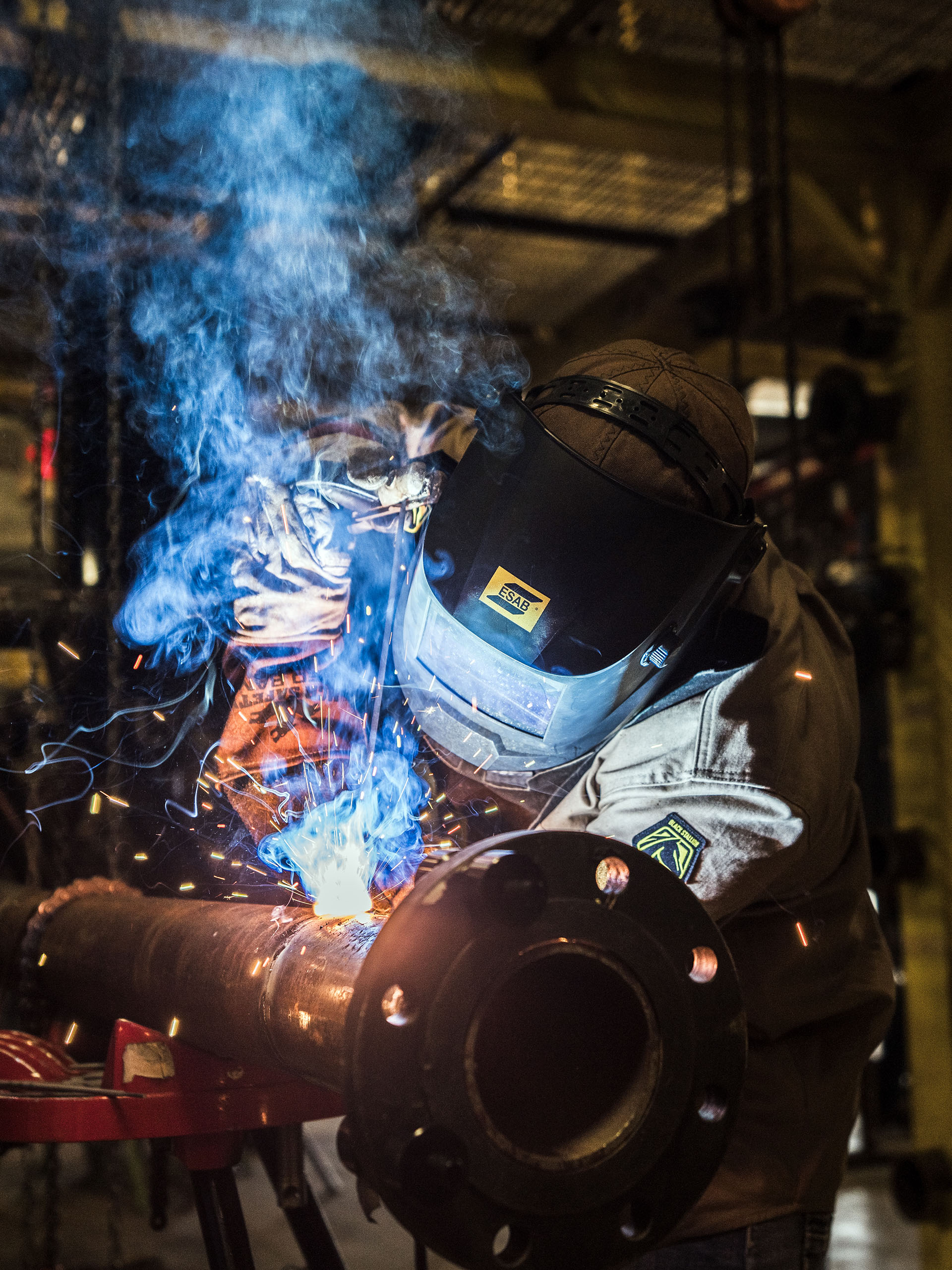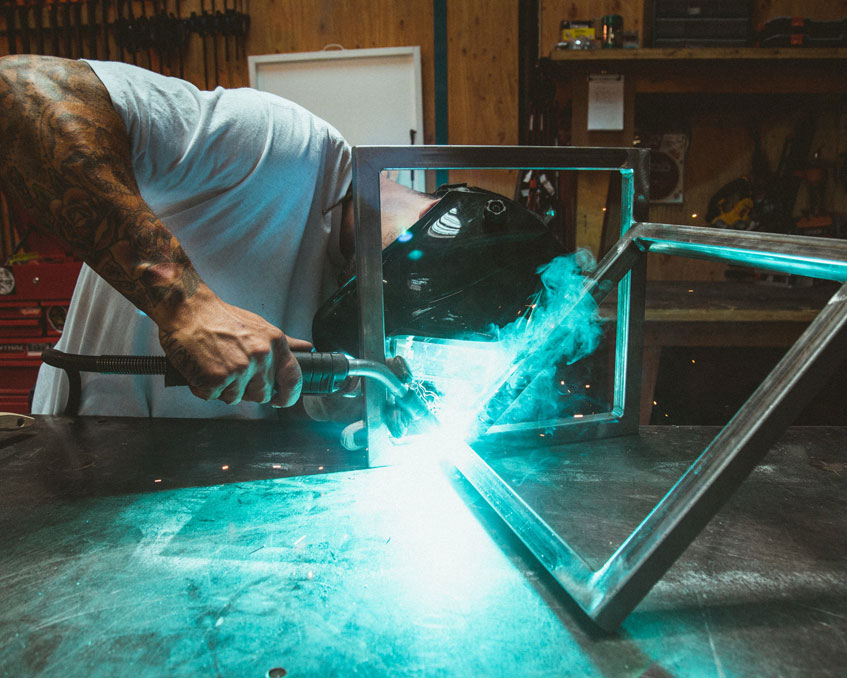Usual Welding Repair Service Issues and How to Address Them Properly
Welding repair work typically run into a variety of issues that can threaten the stability of the end product. Typical troubles include insufficient penetration, porosity, and imbalance, amongst others. Each problem offers one-of-a-kind obstacles that need certain techniques for resolution. Comprehending these concerns is crucial for welders intending to enhance their outcomes and abilities. This discussion will explore these typical welding repair service problems and effective approaches to address them.
Inadequate Infiltration
Insufficient penetration takes place when the weld metal falls short to fully fuse with the base material, leading to weak joints and prospective structural failures. This problem frequently originates from inadequate warmth input, incorrect electrode angle, or improper welding rate. Welders might encounter insufficient infiltration because of a mistake of the needed parameters for a details product thickness or type. In addition, contamination on the base product's surface can hinder efficient bonding, aggravating the trouble. To resolve inadequate penetration, welders must assure ideal settings on their tools and preserve a clean job surface. Normal assessment of welds is advised to identify any deficiencies early, permitting for timely improvements and the avoidance of compromised architectural stability in welded settings up.
Porosity
Porosity is a common issue in bonded joints that shows up as little gas bubbles entraped within the weld metal. This issue can endanger the honesty of the weld, leading to decreased toughness and possible failure under anxiety. Belgrade Welding. Porosity normally arises from contamination, moisture, or improper welding methods, which enable gases to run away into the liquified weld swimming pool. To address porosity, welders need to guarantee appropriate surface preparation, keep a tidy functioning atmosphere, and utilize appropriate welding parameters. Furthermore, picking the appropriate filler material and protecting gas can reduce gas entrapment. Regular inspection and testing of welds can assist recognize porosity early, assuring prompt corrective actions are taken, therefore maintaining the quality and integrity of the bonded structure
Imbalance
Misalignment in welding can develop from various factors, consisting of inappropriate configuration and thermal growth. Recognizing the origin causes is necessary for efficient resolution. Several improvement methods are offered to straighten parts and assure structural integrity.
Sources of Imbalance
Welding misalignment typically originates from a variety of underlying concerns that can jeopardize architectural integrity. One primary cause is improper fit-up of elements prior to welding, which can bring about voids and irregular surface areas. Variations in thermal development throughout the welding process can additionally lead to distortion, particularly if the products being joined have various coefficients of development. Additionally, inadequate fixturing and securing might stop working to hold elements securely in area, leading to motion throughout welding. Inadequately conserved tools, consisting of welding equipments and tools, may present incongruities in the weld bead, more contributing to misalignment. Ultimately, operator mistake, coming from insufficient training or experience, can also play a significant function in creating misaligned welds.
Improvement Strategies Offered
Attending to misalignment properly requires a combination of rehabilitative methods customized to the details concerns handy. One usual method is the usage of fixtures or jigs to hold elements in the proper setting during welding, guaranteeing constant positioning. In addition, pre-heating the products can help in reducing distortion and boost fit-up. For considerable imbalance, mechanical adjustment techniques, such as using hydraulic jacks or clamps, can be used to deal with the position prior to welding. Post-weld warmth therapy may additionally be required to relieve stresses triggered by misalignment. Ultimately, mindful evaluation and change throughout the configuration phase can prevent imbalance problems from ending up being substantial issues, advertising a smoother welding procedure and enhancing total architectural honesty.
Distortion
Distortion is a typical challenge in welding that can emerge from numerous variables, including unequal heating & cooling. Recognizing the reasons for distortion is necessary for implementing reliable prevention strategies. Resolving this concern not just enhances structural stability yet additionally improves the total quality of the weld.
Root causes of Distortion
When based on the intense warm of welding, products usually undertake modifications that can cause distortion. This phenomenon largely arises from thermal growth and tightening throughout the welding procedure. As the weld area warms up, the material expands; upon air conditioning, it contracts, which can develop internal stresses. Additionally, uneven home heating across a work surface can worsen these anxieties, leading to bending or bending. The kind of product additionally plays a significant role; metals with varying thermal conductivity and coefficients of growth may react in different ways, causing unpredictable distortions. Furthermore, inadequate joint layout and insufficient fixturing can add to imbalance throughout welding, boosting the probability of distortion. Comprehending these reasons is necessary for effective welding repair and avoidance methods.
Avoidance Techniques
Effective avoidance techniques for distortion during welding emphasis on controlling heat input and making certain correct joint design. Preserving a constant warmth input aids to reduce thermal growth and tightening, which can lead to distortion. Making use of methods such as preheating the work surface can also decrease the temperature level slope, promoting uniform home heating. Furthermore, picking suitable joint designs, such as T-joints or lap joints, can enhance stability and minimize tension focus. Executing appropriate fixturing to safeguard the workpieces in area even more aids in preserving alignment throughout the welding process. Finally, staggered welding series can disperse warmth a lot more uniformly, avoiding localized distortion. By applying these methods, welders can substantially decrease the possibility of distortion and boost the total high quality of their welds.
Cracking
Fracturing is article an usual issue come across in welding repair hop over to here services, typically resulting from numerous aspects such as inappropriate cooling prices, material selection, or inadequate joint preparation. The incident of splits can greatly compromise the integrity of the weld, bring about possible failings throughout procedure. To address this concern, welders need to initially assess the root creates, guaranteeing that materials are compatible and suitably selected for the particular application. Additionally, controlling the cooling price throughout the welding process is crucial; rapid cooling can generate tension and cause breaking. Proper joint style and preparation additionally add to minimizing the threat. Implementing these methods can improve weld high quality and longevity, inevitably reducing the probability of fracturing in finished weldments.

Incomplete Blend
A substantial concern in welding repair services is incomplete combination, which happens when the weld metal does not properly bond with the base product or previous weld passes - Montana Mobile Welding and Repair Welding. This problem can cause weaknesses in the joint, possibly endangering the integrity of the welded framework. Elements adding to insufficient fusion include inadequate heat input, incorrect welding Visit Your URL method, and contamination of the surfaces being signed up with. To resolve this concern properly, welders should guarantee proper pre-weld cleaning and surface area prep work, as well as adjust their welding specifications to accomplish appropriate infiltration and blend. Normal assessment during the welding procedure can likewise aid identify insufficient blend early, permitting timely rehabilitative measures to improve the general quality of the weld
Overheating
While welding fixings can improve structural stability, overheating offers a significant challenge that can lead to material degradation. Excessive warm throughout welding can alter the mechanical residential properties of metals, causing minimized stamina, enhanced brittleness, and bending. This sensation is specifically essential in high-stress applications where architectural dependability is vital. Determining overheating can involve visual assessments for staining or distortion, in addition to keeping track of temperature throughout the welding procedure. To minimize the threats connected with getting too hot, welders must employ appropriate techniques, such as regulating warm input, changing traveling speed, and making use of suitable filler products. Furthermore, applying pre- and post-weld warm treatments can aid bring back product homes and improve the total quality of the repair service, guaranteeing long-lasting performance and safety and security.
Often Asked Concerns
What Are the Typical Signs of a Welding Flaw?

How Can I Check My Welds for Quality?
To check welds for top quality, one can use visual inspections, ultrasonic screening, and radiographic methods. Each strategy guarantees architectural integrity, recognizes issues, and confirms adherence to defined requirements, ultimately boosting the integrity of the welded joints.
What Safety Safety Measures Should I Take While Welding?
When welding, one need to focus on security by wearing suitable personal protective tools, making certain proper ventilation, safeguarding flammable materials away, keeping a tidy work area, and understanding surroundings to avoid injuries and mishaps.
Can I Repair a Weld Without Remodeling the Entire Joint?
Fixing a weld without renovating the whole joint is possible, relying on the damages (Montana Mobile Welding and Repair Belgrade). Strategies such as grinding, adding filler material, or utilizing a welding procedure can properly deal with particular defects while protecting the surrounding structure
What Tools Are Important for Effective Welding Fixes?
Crucial devices for efficient welding repair work include a welding machine, cable brush, mill, safety gear, clamps, and filler materials. Each device plays an essential function in making sure quality and security throughout the repair service procedure. Porosity generally occurs from contamination, moisture, or improper welding techniques, which allow gases to leave into the molten weld pool. Badly kept tools, including welding machines and devices, may introduce inconsistencies in the weld bead, more adding to misalignment. When subjected to the intense warmth of welding, materials commonly undergo adjustments that can lead to distortion. Breaking is an usual concern encountered in welding repair services, usually resulting from various elements such as inappropriate cooling rates, material selection, or inadequate joint prep work. A significant issue in welding repair services is incomplete blend, which takes place when the weld steel does not sufficiently bond with the base material or previous weld passes.